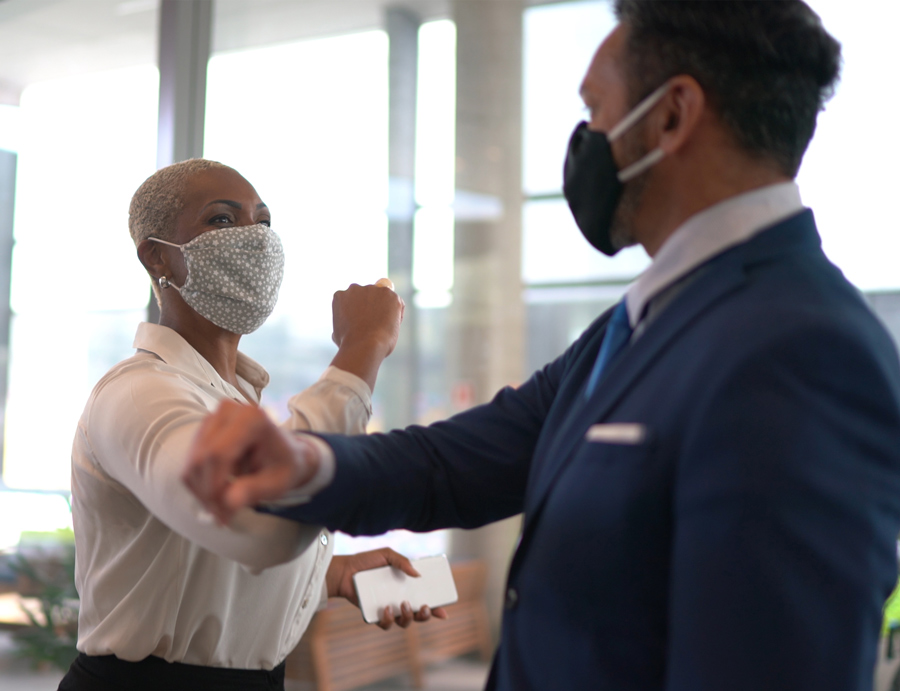



How does professional development grow the leadership of the board?
Sepideh: The relationship between a superintendent and the board has been a popular topic among educators, scholars and researchers. A study conducted by Waters & Marzano (2007) looked into the impact of school district leadership and student achievement. The findings indicate strong district-level leadership can positively impact student achievement. Such findings are not unique. Research by Weiss et.al (2014), states that the most effective school districts have superintendents and boards who collaborate, focusing on the best interest of those they serve. Understanding the importance of the superintendent and board relationship, it is critical to identify the foundation of strong and collaborative relationships. This foundation is trust.
The presence of trust establishes a psychologically safe environment where ideas are invited, shared and respected, resulting in healthy dialogue. Such dialogue leads to brainstorming a best possible alternative to lead districts toward shared vision. It is critical to spend the necessary time, particularly when you have a new superintendent and/or new board member/s, to discuss how you can best work together. How do you establish trust? There are tools such as the “Working Styles Inventory,” designed for school board members to identify working styles and preferences to enhance communication and avoid misunderstanding.
There are simple steps you can take to establish and strengthen trust among your governance team:
- Self-care is key: Your most important relationship is with yourself. Taking care of your own wellness will position you in a peaceful state of mind and will positively influence your interactions.
- Connect on a personal/human level: Spend time getting to know your team.
- Lean into your discomfort and practice vulnerability: When team members know one another by having open-hearted conversations, they are less likely to judge and make assumptions.
- Be mindful of personal biases: Having awareness of your personal biases and avoiding stereotypes will allow you to get to know others who are different from you.
- When something is on your mind, communicate: In seeking clarification, sharing feelings and asking questions, remember conflict management guru Esther Bleuel’s advice: (1) let the person know you have something to talk about, (2) stick to the facts and (3) say it kindly.
Remember that spending time to establish trust will strengthen your team as a unified voice, which is extremely vital in leading your district forward, particularly in times of crisis.
Teri: The board and superintendent work together as a governance team. For a governance team to work together effectively, members need to: (1) maintain a unity of purpose, (2) agree to govern within appropriate roles, (3) create and sustain a positive governance culture and (4) create a supportive structure for effective governance.
Maintaining a governance handbook is one practice that is important in securing an effective relationship between the superintendent and the board. The governance handbook contains the agreements of how the team will conduct business together and can be useful for maintaining accountability within the working relationships of the governance team. It is also a valuable document to use to on-board new trustees.
A governance handbook documents how the board and superintendent agree to provide governance leadership in support of student learning and achievement, as defined by the vision, mission and goals of the district. The handbook reflects the governance team’s work on creating a framework for effective governance. This involves ongoing discussions about unity of purpose, roles, commitment to norms and agreement on protocols and formal structures that will enable the governance team to perform its responsibilities in a way that best benefits all students.
It is a living document created by the team that is reviewed yearly as the needs of the governance team change and as protocols and norms are updated or added. To be a cohesive team, all must understand the rules of the work in which they engage. Leadership for the district is modeled by the governance team. It is easier to do that work when roles and rules are clearly defined. It is critical that the superintendent and the board work together respectively and keep the focus on the students.
Liz: Although unique to school board governance structures, the elected county board of education’s relationship with the elected or appointed county superintendent is based on the same mutual respect for one another’s roles and responsibilities as other educational governance teams. The county superintendent has legal authority as the employer, and the county board needs the superintendent’s staff to ensure their roles and responsibilities are implemented. This process spelled out in education and government codes creates a system where this mutual respect is even more critical to ensure each entity succeeds. In more than three decades working with four elected superintendents, understanding my roles and responsibilities as a board member — while also understanding the roles and responsibilities unique to the county superintendent — was critical to ensure our goals and objectives for student success were met.
From the start, understanding the expectations of one another’s roles is essential for an effective governance team. An effective practice I have utilized to start building a collaborative relationship is to meet in a relaxed setting, perhaps over a cup of coffee or tea, and begin a conversation. What I have found is putting in time and effort is key to resolving differences, appreciating commonalities and laying the groundwork for a productive relationship. To ensure students’ needs are met, my best practice is to meet with the superintendent to discuss my questions. I consistently offer my time, expertise, relationships and resources to work as a team focused on how to best serve students in an equitable and just manner.